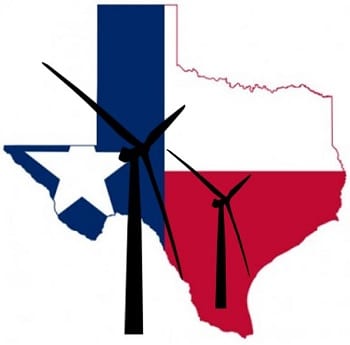Wind energy is beginning to take over Texas
October 31, 2016Solar and wind continue to see strong growth throughout Texas
Solar and wind energy are taking over in Texas. These two forms of clean power are beginning to outpace conventional forms of energy in terms of electricity production, which could have major implications for the future of the state. Texas is already home to the largest wind energy market in the United States, and solar power is growing quickly in the state. As one of the nation’s largest oil and natural gas producers, the rise of clean energy in Texas could have a major impact on the rest of the country.
State leads in production of oil and natural gas, but is also the country’s leading wind energy market
Texas currently produces 37% of the United States’ crude oil and 28% of its natural gas. The state is also home to the country’s largest wind energy market, boasting of more than 10,000 wind turbines, all of which are currently in operation and producing electricity. More wind farms are expected to take form in the state in the coming years. Texas currently produces more electricity from wind than 25 other states from all energy sources combined.
Solar is experiencing strong growth alongside wind
 Solar energy is also growing quickly in Texas. The state expects more than 10,000 megawatts of solar capacity to be installed by 2029, making Texas a strong leader in the solar sector. Solar energy has been growing quickly due to the residential sector, with many homeowners looking to save on their energy bills by embracing cleaner forms of power. State policy has also aided in the growth of renewable energy, with lawmakers showing strong favor for solar and wind power.
Solar energy is also growing quickly in Texas. The state expects more than 10,000 megawatts of solar capacity to be installed by 2029, making Texas a strong leader in the solar sector. Solar energy has been growing quickly due to the residential sector, with many homeowners looking to save on their energy bills by embracing cleaner forms of power. State policy has also aided in the growth of renewable energy, with lawmakers showing strong favor for solar and wind power.
Wind energy may help Texas meet its emissions reduction goals
Texas is looking to make use of renewable energy more aggressively. The state is hoping to become more environmentally friendly and rely less on fossil-fuels. Texas has invested heavily in wind energy, specifically, in an effort to meet new emission reduction goals and comply with emission regulations coming from the federal government.

 HFN News is your leading source for fresh hydrogen and renewable energy updates. Amid the fast-paced growth of hydrogen companies, we provide top-notch news and insights about this exciting sector. Our coverage spans from hydrogen cars to global sustainable initiatives, and we highlight the latest in green jobs and developing hydrogen hubs. We invite you to share your local hydrogen news and explore today’s renewable energy job listings on our site. Thanks for choosing HFN News as your trusted guide to the hydrogen and renewable energy world!
HFN News is your leading source for fresh hydrogen and renewable energy updates. Amid the fast-paced growth of hydrogen companies, we provide top-notch news and insights about this exciting sector. Our coverage spans from hydrogen cars to global sustainable initiatives, and we highlight the latest in green jobs and developing hydrogen hubs. We invite you to share your local hydrogen news and explore today’s renewable energy job listings on our site. Thanks for choosing HFN News as your trusted guide to the hydrogen and renewable energy world!